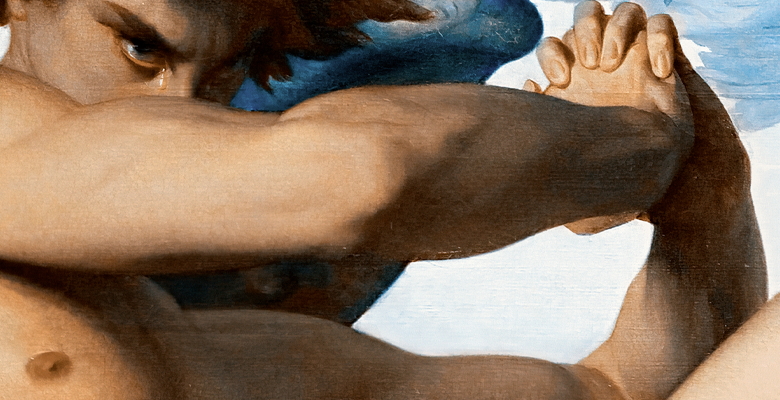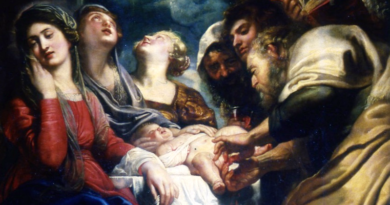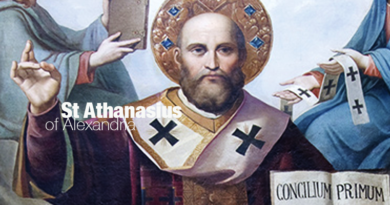The Fallen Angel By Alexandre Cabanel – The Story Of The Painting
A romantic and very expressive painting of a crying young angel who looks like a Greek god with a perfect body. It’s the Fallen Angel by a French classical artist Alexandre Cabanel who happened to be Napoleon’s favorite painter. What’s the story of this painting?
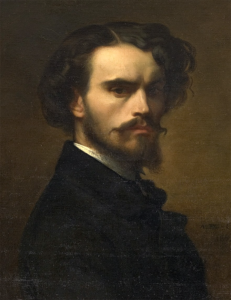
Alexandre Cabanel (1823–1889), a French classical painter, had everything an artist might want – talent, fame, recognition. His success at the exhibitions with the French Salon and the love of Napoleon might hint at his opportunism in life but here and there Cabanel’s clean artistic career slide was interrupted by his rebellion – like with the painting of the fallen angel.
Golden Boy
Five years at the art lyceum in his hometown of Montpelier. At the age of 17 years od he is enrolled in the prestigious art school École des Beaux-Arts in Paris where for five more years he learns the academic technique and falls in love with the romanticism in art.
Literature, mythology, religion, history became the foundation for his future works.
For his graduation in 1845 (he is 22) he painted The Mocking of Christ for which he was awarded a prize Prix de Rome – a generous scholarship from the French State which supported exceptionally talented young artists and allowed them to study visual arts in Rome. So Cabanel goes to Rome for another five years.
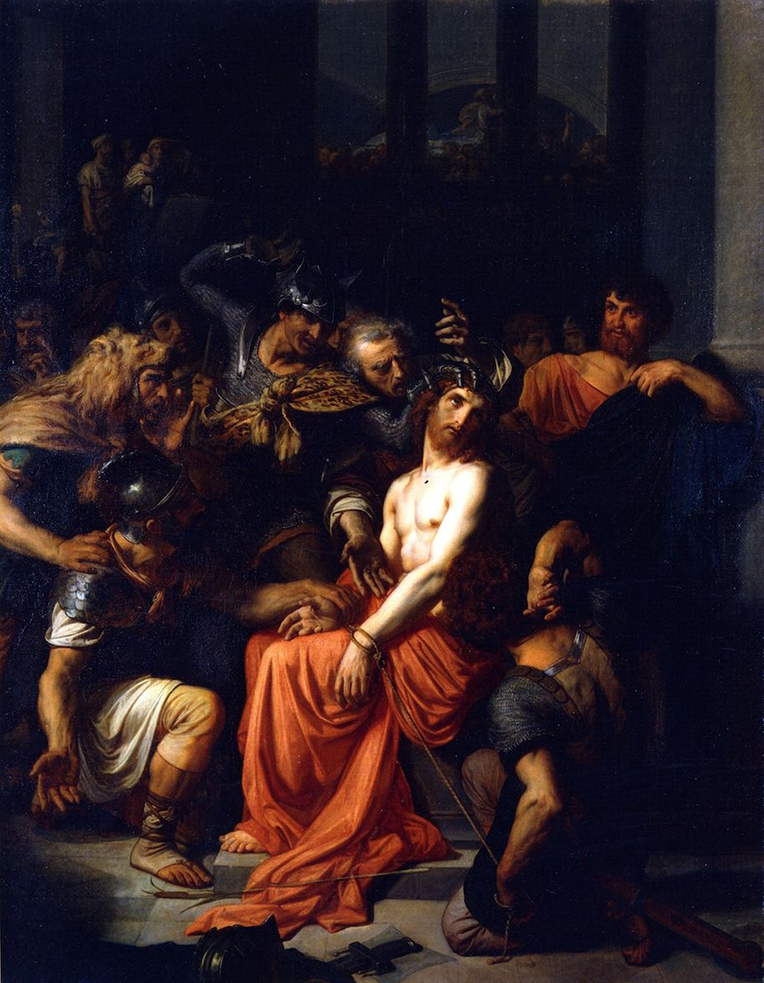
It’s in Rome, at the Villa Medici where Cabanel lived and worked with other French artists, his style and his painting technique formed and established. After five years in Rome Cabanel brings to Paris his painting “Death of Moses” and submits it to the Paris Salon in 1852, the most prestigious art exhibition of that time.
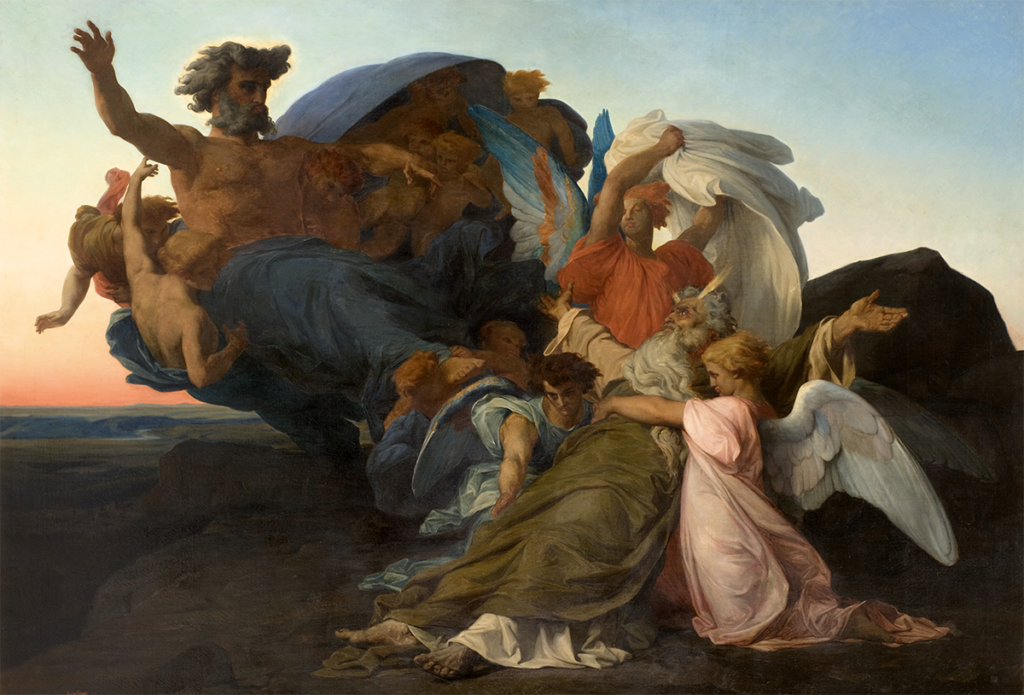
L’Art Pompier & Napoleon
That’s when the fame began for a 22 year old artist. The “Death of Moses” brought him the First Prize of the Salon and and laid the foundation for endless prizes, medal, awards and recognition. Interesting that the year 1852 was also the beginning of Bonapartist dictatorship in France. And eventually it will happen that Napoleon Bonapart will play a big role in Cabanel’s artistic career.
Thanks to the support of the dictator and his love for the aesthetics the fine arts would flourish and the whole new style would develop – the L’art Pompier*, an extremely polished French Academicism. And Cabanel would become the best representative of that style which was born to praise and enhance the prestige of Napoleon’s empire.
* L’art pompier (French for ‘fireman art’) is an ironic and even ridiculing French term for the art style of French Academicism where prevail large ‘official’ academic paintings on historical or allegorical subjects. The term “l’art pompier” derives from the helmets with horse-hair tails, worn at the time by French firemen, which are similar to the Attic helmets often worn in such works by allegorical personifications, classical warriors, or Napoleonic cavalry. This type of art was seen by those who used the term as the epitome of the values of the bourgeoisie.
Of course, even without any helmets depicted on canvas, paintings of artist who lived at that time and were favored by those in power (like Cabanel by Napoleon) were still ironically called L’art Pompier.
However, French Academicism also has its advantages. As a strong trend in European art of the 19th century, the Academicism was based on dogmatic adherence to the external forms of classical art. Also, the Academicism had a decisive influence on the systematization of art education, consolidation of classical traditions which it considered as a system of “eternal” canons and regulations in classical art of painting.
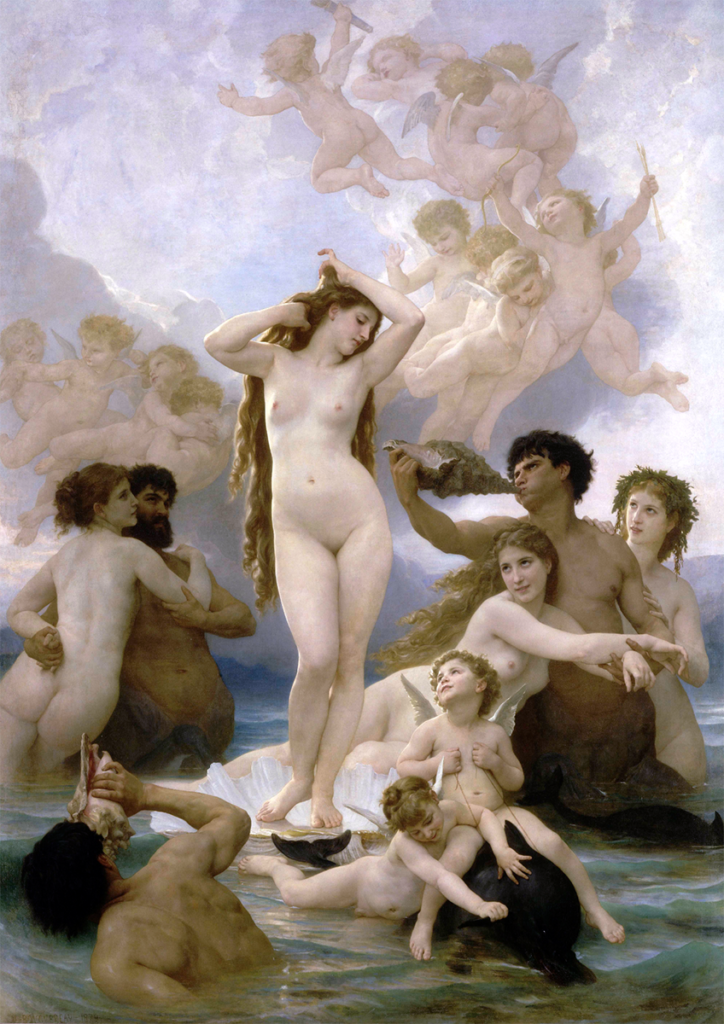
The Fallen Angel
While in Rome, like any other resident of the program, Cabanel had to send paintings back to France on a regular basis just to demonstrate his progress in learning the painting techniques. One of these to-be-sent-home paintings was The Fallen Angel. He created it in 1847. He was 24.
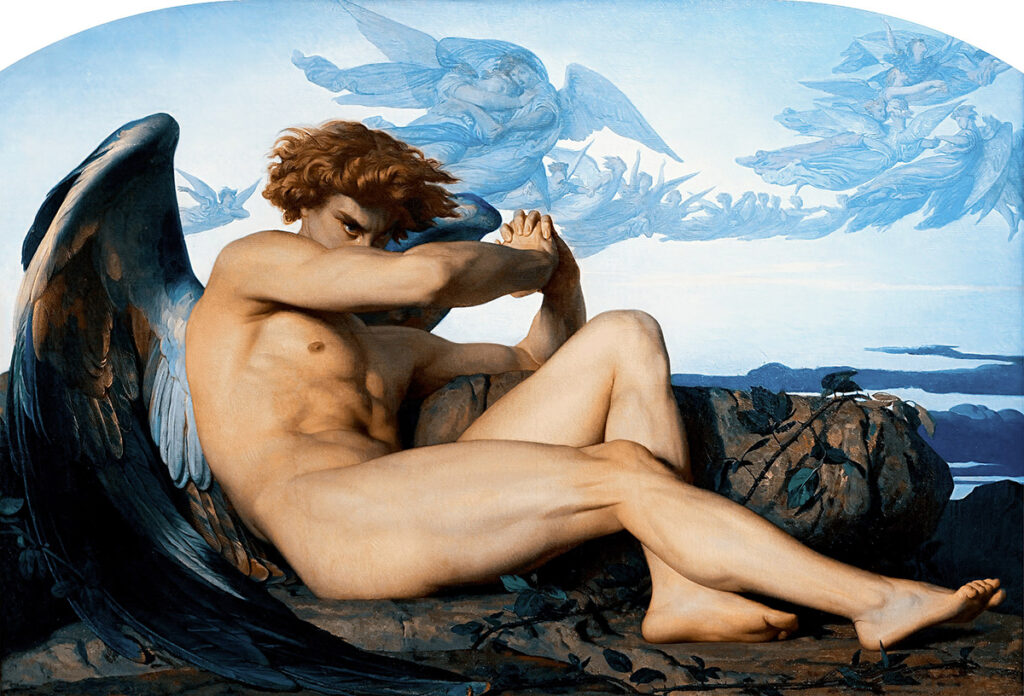
Cabanel’s Fallen Angel was inspired by John Milton’s epic poem “Paradise Lost”. Lucifer is the first major character introduced in the poem. There, he is a tragic figure who declares – “Better to reign in Hell than serve in Heaven”. Following his rebellion against God he is cast out from Heaven and condemned to hell. The story of pride and envy.
Depicting an angel expelled from heaven by God is not a typical subject in visual arts. Neither is it now, nor was it back then. Even more so – a saddened Lucifer, with his hands crossed and tears running from his eyes.
The painting shocked everyone!
“…The movement is wrong, the draughtsmanship imprecise, the execution deficient…” – The Academic jury about Canabel’s “Fallen Angel” (from the book “Procès verbaux de l’Académie des Beaux-Arts” by Sybille Bellamy-Brown)
No one from students in Rome had ever sent a work on which the devil was depicted. The painting was criticized as much as his previous work, which he sent to Paris – “Orestes” (1846).
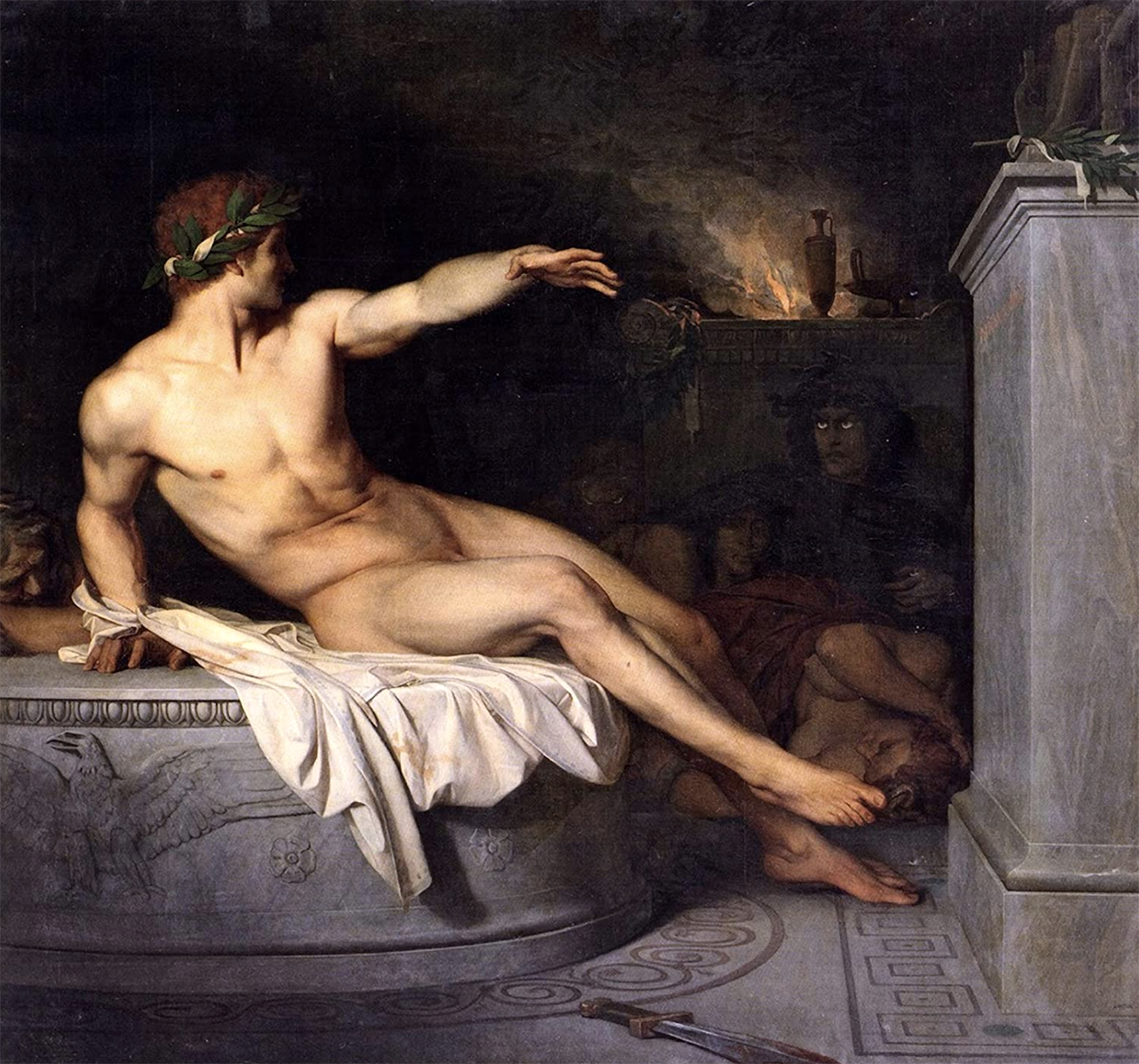
The “Fallen Angel” shocked everyone but not Canabel’s close friend Alfred Bruyas with whom he shared very intimate moments and thoughts. It’s to Bruas that Canabel wrote about his feelings about the criticism of the painting:
“This is my reward for all the hardships that I brought upon myself by not wanting to send a mediocre work…”
It was absolutely not about the male nudity. And not about the mythology that might have shocked the Academy. But about the emotion that was shown in the painting and was provoked by the viewer. Sensual, sexual, rebellious, sultry. No real man looks like this yet Lucifer does. No student dared to depict the devil yet Cabanel did. And if one looks close enough, the angel’s facial features might seem similar to those of the author of the painting.
An other interesting aspect is that the Lucifer in the poem which inspired young Cabanel for the “Fallen Angel” is beautiful yet arrogant, talented yet deceptive. Those descriptions fit perfectly the young Cabanel the way we know about him. A self-portrait, a golden boy yet rebellious, an open book yet mysterious, yearning for love but rejecting it.

Dimitri Ross
Dimitri Ross, a contemporary figurative visual artist. Based in Florence, Italy. Currently he masters the academic painting and sacred art in Florence by deepening his artistic research on painting techniques of the Italian Renaissance.


